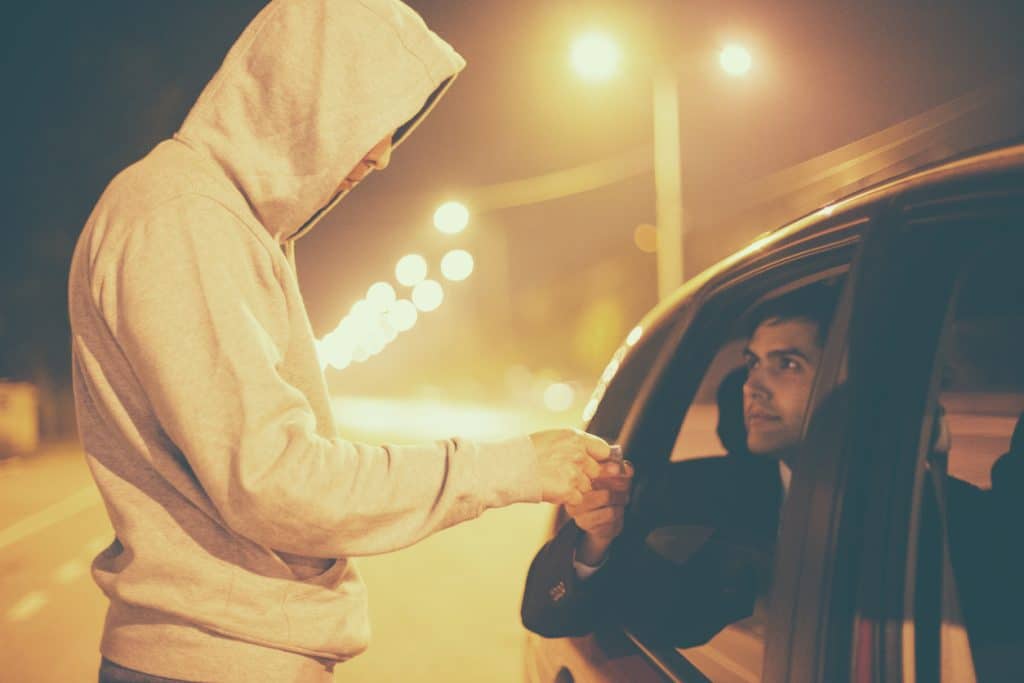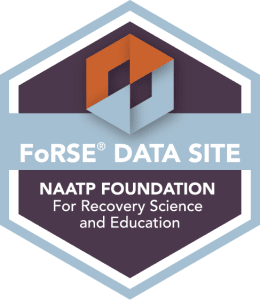The 2018 National Survey on Drug Use and Health reported that 20 million people struggled with drug and alcohol addiction. This means that 1 in 13 Americans over the age of 12 are dealing with their addictions’ physical and mental consequences.
But what about the people who are directly (and even indirectly) linked to those who have a drug addiction? How is society affected by its interaction with drug addiction?
Substance abuse addiction causes problems within the socioeconomic status of everyone involved. This doesn’t mean just the drug addict and their immediate family. Drug addiction also implicates everyone in the surrounding prisons and healthcare facilities, along with the economy as a whole.

The American Medical Association classified addiction and alcoholism as medical diseases in the 1950s. This disorder generally begins during adolescence, when teenagers are more likely to give in to peer pressure.
When it goes untreated, it becomes a chronic illness that requires lifelong maintenance and care so that it doesn’t spiral out of control.
After years of abusing drugs, drug addicts may have trouble finding their way back to sobriety.
In fact, they often find that they are suffering from the long-term effects of substance abuse impact, meaning they are:
> Unable to quit using drugs (experiencing withdrawal)
> Have strained relationships with everyone in their lives
> Perform poorly at school or work due to addiction
> Are more likely to take part in risky or impulsive behaviors
They may find that they have difficulty keeping up with healthy hygiene habits. Their appearance may even change due to the addiction.
Addiction breaks down the immune system. Even after recovering, the drug addiction impact may cause long-term health conditions.
Long-Term Health Conditions
> Infectious diseases (such as HIV, Hepatitis A, and Hepatitis C)
> COPD and other respiratory issues
> Cardiovascular disease
> Kidney damage
> Liver disease
Chronic drug abuse can lead to the alteration of an individual’s brain in both function and structure. This change is permanent. Once rewired, the brain will always be chasing that high, making it difficult for them to focus on anything else.
Drug addiction can affect the brain’s ability to remember, learn, and concentrate on things.
Other Long-Term Psychological Effects
> Depression and anxiety
> Panic disorders
> Aggression
> Hallucinations and paranoia
Personality Changes
> Mood swings and violent outbursts
> Secret keeping and violations of trust
> Irrational, self-centered behaviors
> Paranoia
These behaviors are directly related to the need for a drug addict’s next fix. They can cause marriages and relationships to suffer and can lead to estrangement.
Because drug addicts are so focused on supplying their next high, their responsibilities don’t seem important anymore. This means they are losing jobs and failing to pay bills because while they may want to be responsible, the addiction prevents them from following through.
Getting arrested for drug-related charges can make it more difficult for recovering drug addicts to:
> Get a decent job
> Find adequate housing
> Provide for their families
Once someone becomes addicted to drugs, they will have to work harder to get their life together. But with proper treatment and rehabilitation, recovery is possible.
Teenagers are more likely to succumb to peer pressure and take risks when it comes to fitting in. (They may have a rough home life where their guardians are drug abusers, so they don’t know better.)
In some cases, these teenagers may be taking drugs to increase their academic and athletic performances.
When they are high, they are more likely to show up to class in that state and may even bring drug paraphernalia with them.
Adolescents are more likely to use prescription drugs (like Vicodin and Oxycontin) to get high because:
> It is more accessible (from parent’s medicine cabinets to doctor prescriptions)
> They believe that prescription drugs are safer than street drugs
Drugs and alcohol are more likely to rewire a teenager’s brain, causing damage to synapses, implementing memory issues, and limiting learning abilities.
Illicit drugs are not allowed on high school and college campuses. Drug use can (and most likely will) result in expulsion from school, clubs, and sports.
This may cause them to lose friends and mentors. Legal actions may even be taken against them for breaking no-drug policies causing them to spend time in juvenile detention or jail.

The most significant social impact of addiction and misusing drugs is on the family and close friends of the drug abuser.
The relationships between a drug abuser and their children and partner become strained. Trust is lost because they fail to honor commitments and promises (even when they want to take part).
Children find themselves unable to create trusting relationships with other people. The addict’s spouse/partner is expected to fulfill the roles of both parents because the addict is unable to do so. A drug addict’s family members will begin to deal with higher levels of stress from the added responsibility, which can cause them to develop health problems (like high blood pressure or anxiety).
The family members of a drug addict might feel embarrassed or ashamed of them. They may be at a loss when it comes to how they can help.
Eventually, they may think that their only option is to take the “tough love” route. In fact, this is where families are often impacted by enabling and/or codependency and are pulled into the struggle that is common in addiction (Melody Beatty, Codependent No More, Hazelden Publishing,1986, pp 32-34).
If you are struggling with drug addiction, you should know that your family wants to help you, but they can’t do much until you take the first steps toward recovery.
Drug addiction can potentially lead to broken homes and living impoverished lives.
The most significant social impact of addiction and misusing drugs is on the family and close friends of the drug abuser.
The relationships between a drug abuser and their children and partner become strained. Trust is lost because they fail to honor commitments and promises (even when they want to take part).
Children find themselves unable to create trusting relationships with other people. The addict’s spouse/partner is expected to fulfill the roles of both parents because the addict is unable to do so. A drug addict’s family members will begin to deal with higher levels of stress from the added responsibility, which can cause them to develop health problems (like high blood pressure or anxiety).
The family members of a drug addict might feel embarrassed or ashamed of them. They may be at a loss when it comes to how they can help.
Eventually, they may think that their only option is to take the “tough love” route. In fact, this is where families are often impacted by enabling and/or codependency and are pulled into the struggle that is common in addiction (Melody Beatty, Codependent No More, Hazelden Publishing,1986, pp 32-34).
If you are struggling with drug addiction, you should know that your family wants to help you, but they can’t do much until you take the first steps toward recovery.
Drug addiction can potentially lead to broken homes and living impoverished lives.
The primary role in an addict’s family is the Addict. The need for their drug of choice comes before anything and anyone else. Meanwhile, the rest of the family members take on specific roles depending on their situation.
The Enabler is a person or people in an addict’s life that picks up after the addict and keeps the house clean. They make sure that all the bills are paid, and they make sure that the children make it to and from school each day. They also give the addict money, which is spent on drugs in order to avoid conflict within the house.
In general, the enabler will be a spouse or partner. In a single-parent home, this role can fall on the shoulders of the oldest child or the child that has the closest relationship with the addict. This role helps to mask the anger, betrayal, and hurt caused by the addict.
One in every five children has drug-addicted parents. Because of the drug addiction, their parent(s) are often too busy with their addiction to care about their children’s needs.
Children of drug addicts feel like they don’t have anyone to turn to. They are also more likely to be neglected and abused than other children. This means that they might not have access to necessities like healthcare, shelter, and food.
These children are more likely to isolate themselves from their peers. They may tend to fear criticism, authority figures, and angry people. They may also be more judgmental and critical of themselves and where or how they are meant to fit into the world.
Though anyone can overcome an addiction, it boils down to genetics and the environment in which they were raised. So, in most cases, a child or children of an addict are eight times more likely to become drug addicts themselves.
The children will also take at least one of four roles within the family: the Hero, the Scapegoat, the Mascot, and the Lost Child.
The Hero is the child that takes on more responsibilities in the household. They tend to become an academic overachiever and get straight As. They may even take on some of the enabler’s roles. Their main intention, however, is to get the addict to overcome their addiction.
They do all of this to attempt to convey a sense of normalcy in the family. This role helps them to cover up feelings of guilt or inadequacy. As a result, they are more likely to suffer from an overload of stress and anxiety.
The Scapegoat is the child who rebels by acting out and misbehaving to distract themselves from the familial turmoil. This child tends to get blamed for the family’s problems and grows to resent the addicted parent for the neglectful behaviors.
As they get older, this child may get in trouble with the law. Females are more likely to engage in risky sexual behavior, while males may become abusive towards their own families.
The Mascot is the child that provides some laughter or humor during the tough times to help other family members cope. These children may grow up to self-medicate with drugs and alcohol to avoid healing from their childhood trauma as adults.
The Lost Child is usually the middle or youngest child. This child has trouble interacting with others and has underdeveloped social skills. They tend to be more withdrawn and spend a lot of time alone. They engage in fantasy play to distract themselves from their home life. As adults, they have trouble forming lasting relationships and making decisions (especially the important ones).
Seventy-five percent of foster care placements and 80% of neglect/abuse cases stem from having drug-addicted parents.
Children are being taken from their homes and thrown into the foster care system because their parents are addicted to drugs. They were taught that it was normal behavior.
Less than 10% of babies born to heroin-addicted mothers live with their mothers. Until their addiction is under control, these mothers won’t have parental rights to their children.
Unfortunately, this adds to the number of children in foster care and those who age out of the system when they turn 18.
With drug addiction comes lost jobs and unstable financial situations that cause drug addicts to be only concerned about getting their next fix. This means that rent and other bills don’t get paid because the majority of the income will support the drug addiction.
When these bills aren’t paid, entire families lose their homes and live below the poverty level. They may not have access to appropriate shelter or food.
Even though help is available, these families don’t know where to start or don’t feel comfortable asking for help. They may even feel undeserving of these services or don’t think they need help from outside sources.
Addicts are known for displaying erratic behavior, and it can put the entire family on edge. Minor disagreements may be blown out of proportion due to miscommunication.
The family members may start “walking on eggshells” around the addict out of fear and confusion based on their irrational behaviors. The children in the family may become more reserved and withdrawn in an attempt to avoid upsetting their parent(s).
These homes are rarely happy and carefree. In some cases, these families may walk out on the addict, especially when the fights become violent and the light at the end of the tunnel isn’t very bright.
This horrible cycle can only be broken with proper treatment and rehabilitation. Therapy can be a valuable tool for these families in a group or an individual setting.
When an addict realizes how their actions affect their families, it can help push them towards bettering themselves for a brighter future (with their families).
Drug addiction puts a strain on any relationships one might have with their employers and coworkers. When employees show up to work drunk, high, or even hungover, they pose a risk to themselves and anyone they might come into contact with during their shift. Small to mid-sized businesses are likely to go under if their employees are using drugs at work.
Coworkers are increasingly stressed from picking up extra shifts and wondering about their safety when a drug addict shows up to work in a state of intoxication. They work harder to make sure that their place of employment stays in business.
If an employee shows up to work intoxicated, the chance of a work injury taking place increases. Because of this, the insurance premiums for the employer and the other employees are also bound to increase.

One of the most significant risks of abusing drugs is overdosing. Opioid-related overdoses have tripled in the last ten years. In 2019, over 70% of overdose deaths were from opioid use, including prescription opioids. Because drug addiction is a chronic illness, it gets treated by the healthcare system.
America spends approximately $150 billion on drug-related issues every year. In 2010, the healthcare industry made up $160 billion of tobacco costs and $27 billion in alcohol.
In 2013, $26 billion went toward healthcare costs for prescription opioid addiction. The same year, $78.5 billion was spent in total on healthcare, crime, and work productivity.
Treating drug overdoses with Naloxone and sending drug addicts to rehab tends to be expensive, especially when the recidivism rates continue to be so high. Twenty percent of Medicaid dollars go to these drug addiction expenses.
Forty-four percent of the drivers in fatal car crashes tested positive for drugs. Additionally, 12.8 million people admitted to driving while under the influence of drugs, according to a 2017 National Survey on Drug Use and Health.
Drug addiction is expensive. It costs a lot of money to buy the substances to fuel a drug habit. Drug addicts also have a difficult time holding jobs, paying bills, and saving money. But drug abuse also causes the economy to feel the impact.
Unfortunately, more funds go to putting people in jail for drug-related crimes rather than pushing them to seek out rehabilitation and treatment. When, in reality, the focus should be on providing rehabilitation to drug addicts so that they can become productive members of society once more.
The War on Drugs was an initiative started in the 1970s by President Nixon. Nixon’s goal was to eradicate the use of illicit drugs through escalating military and police involvement. Over the last forty-some years, illicit drugs were made to be less accessible with more severe punishments.
This process, however, led to the proliferation of violence and the mass incarceration of drug-related crimes.
Since the 1970s, the American government spent $1 trillion on the cause, but it failed in certain aspects. Today, the drug crisis continues as drug addiction remains a severe problem.
As a result, drug policy experts are working on different reforms to help deal with the situation by focusing on rehabilitation and decriminalizing/legalizing illicit drugs.

As the War on Drugs continues, the United States continues to have crowding issues within the jail systems. Every 25 seconds, someone gets arrested for drug possession. This number has tripled since the 1980s. In fact, 2015 saw 1.3 million drug arrests.
Eighty percent of incarcerated individuals have abused or are currently using drugs. Approximately 25% of these individuals admitted to committing crimes in order to get the money to satisfy their drug habit.
A person of color is also more likely to do a mandatory minimum sentence (and less likely to get relief from the required minimum) than someone who isn’t.
For every drug-related incarceration case, the recidivism rate for untreated drug abusers is 95%.
Incarceration doesn’t help because it doesn’t impact a drug addict’s drug misuse. Imprisonment for drug charges increases the odds of death from a drug overdose. These individuals are 129% more likely to overdose (and 13 times more likely to die from an overdose) soon after they get released from jail after serving a sentence.
Addiction affects millions of people each year. With rehabilitation and recovery, more people can be reached, and the social impact of drug abuse will lessen.
By treating drug addicts for their addictions rather than sending them to jail, it is possible to lessen the impact on the country. With the proper treatment, recidivism rates will drop along with violent crime rates. More children will grow up with their families when their parents get the treatment they need to reclaim their rightful spot in society.
To learn more on how to get addiction treatment in Virginia, contact Bridging the Gaps today.
Contact
31 S. Braddock Street
Winchester, VA 22601
Phone: 540-535-1111
Fax: 540-450-1205
admissions@bridgingthegaps.com
Addictions
Modalities


